- Home
- Don Pendleton
Toxic Terrain
Toxic Terrain Read online
Bolan awoke to find himself lying on an operating table
A pair of green eyes peered at him from over a hospital face mask. Kristen Kemp sewed the last stitches into his shoulder and said, “You’ve lost a lot of blood.”
“Where are we?” he asked.
“In my clinic.”
Bolan sat up and tried to collect his thoughts. “How long was I out?” he asked.
“About an hour,” she said.
Bolan remained silent, contemplating the likelihood that they’d been followed.
Kemp put her hands on Bolan’s shoulders and tried to get him to lie back down. “You should rest.”
“We’re not safe here,” Bolan said.
“Grassy Butte has two hundred and fifty people, and I know every last one of them. No one’s going to harm us here,” she said as she covered his wounds with sterile bandages.
“Whatever you thought you knew about this place changed the moment we got shot at yesterday,” he told her. “Something big is going on here—and it’s damned dangerous.”
Before Kemp could respond, Bolan saw the shadow of a man holding what could only be a gun outlined in the window. He grabbed Kemp’s shoulders and flipped her over him, as automatic gunfire tore through the walls of the clinic.
Hurling himself on top of her, Bolan had just one more question. “Where are my weapons?”
MACK BOLAN®
The Executioner
#315 Agent of Peril
#316 Poison Justice
#317 Hour of Judgment
#318 Code of Resistance
#319 Entry Point
#320 Exit Code
#321 Suicide Highway
#322 Time Bomb
#323 Soft Target
#324 Terminal Zone
#325 Edge of Hell
#326 Blood Tide
#327 Serpent’s Lair
#328 Triangle of Terror
#329 Hostile Crossing
#330 Dual Action
#331 Assault Force
#332 Slaughter House
#333 Aftershock
#334 Jungle Justice
#335 Blood Vector
#336 Homeland Terror
#337 Tropic Blast
#338 Nuclear Reaction
#339 Deadly Contact
#340 Splinter Cell
#341 Rebel Force
#342 Double Play
#343 Border War
#344 Primal Law
#345 Orange Alert
#346 Vigilante Run
#347 Dragon’s Den
#348 Carnage Code
#349 Firestorm
#350 Volatile Agent
#351 Hell Night
#352 Killing Trade
#353 Black Death Reprise
#354 Ambush Force
#355 Outback Assault
#356 Defense Breach
#357 Extreme Justice
#358 Blood Toll
#359 Desperate Passage
#360 Mission to Burma
#361 Final Resort
#362 Patriot Acts
#363 Face of Terror
#364 Hostile Odds
#365 Collision Course
#366 Pele’s Fire
#367 Loose Cannon
#368 Crisis Nation
#369 Dangerous Tides
#370 Dark Alliance
#371 Fire Zone
#372 Lethal Compound
#373 Code of Honor
#374 System Corruption
#375 Salvador Strike
#376 Frontier Fury
#377 Desperate Cargo
#378 Death Run
#379 Deep Recon
#380 Silent Threat
#381 Killing Ground
#382 Threat Factor
#383 Raw Fury
#384 Cartel Clash
#385 Recovery Force
#386 Crucial Intercept
#387 Powder Burn
#388 Final Coup
#389 Deadly Command
# 390 Toxic Terrain
Don Pendleton’s
The Executioner®
TOXIC TERRAIN
Hesitation and half measures lose all in war.
—Napoleon Bonaparte
1769–1821
Napoleon I: Maxims of War
A threat against America is a threat against me—and I will not hesitate to take out all conspirators, with swiftness and finality.
—Mack Bolan
THE MACK BOLAN LEGEND
* * *
Nothing less than a war could have fashioned the destiny of the man called Mack Bolan. Bolan earned the Executioner title in the jungle hell of Vietnam.
But this soldier also wore another name—Sergeant Mercy. He was so tagged because of the compassion he showed to wounded comrades-in-arms and Vietnamese civilians.
Mack Bolan’s second tour of duty ended prematurely when he was given emergency leave to return home and bury his family, victims of the Mob. Then he declared a one-man war against the Mafia.
He confronted the Families head-on from coast to coast, and soon a hope of victory began to appear. But Bolan had broken society’s every rule. That same society started gunning for this elusive warrior—to no avail.
So Bolan was offered amnesty to work within the system against terrorism. This time, as an employee of Uncle Sam, Bolan became Colonel John Phoenix. With a command center at Stony Man Farm in Virginia, he and his new allies—Able Team and Phoenix Force—waged relentless war on a new adversary: the KGB.
But when his one true love, April Rose, died at the hands of the Soviet terror machine, Bolan severed all ties with Establishment authority.
Now, after a lengthy lone-wolf struggle and much soul-searching, the Executioner has agreed to enter an “arm’s-length” alliance with his government once more, reserving the right to pursue personal missions in his Everlasting War.
* * *
Contents
Prologue
Chapter 1
Chapter 2
Chapter 3
Chapter 4
Chapter 5
Chapter 6
Chapter 7
Chapter 8
Chapter 9
Chapter 10
Prologue
Grassy Butte, North Dakota
Pam Bowman stared down at the dead Hereford calf at her feet and said, “This is not good.”
“It most certainly is not,” the man standing next to her confirmed.
He would know, Bowman thought. Though he was just the McKenzie County extension agent, Roger Grevoy had earned both an M.D. and a Ph.D. from Johns Hopkins, and had at one time been considered among the world’s top researchers studying the pathology of communicable diseases. Grevoy had never discussed how he’d gone from holding a high-powered research job with the Pentagon to being a lowly county extension agent, but Bowman suspected it had something to do with the meetings he went to in the basement of the local Catholic church every Wednesday night. Whatever the reason, she was damned glad to have his help.
“Is it what I think it is?” Bowman asked.
“I won’t have the test results until tomorrow,” Grevoy said, “but it looks like it might be. I’ve seen it before. Bovine spongiform encephalopathy. Mad cow disease.”
“How’s that possible?” Bowman asked. “This calf can’t be but four months old. It takes years for an animal to die from BSE.”
“I know. I think we’re dealing with something we’ve never seen before. And it’s extremely bad.”
“We’d better start riding back to the truck if we’re going to get out of here before sunset,” Bowman said.
Grevoy packed his tissue samples in the dry-ice packs in his saddlebag and the pair mounted their horses. They had ridden nearly an hour to get to the infected herd and
had about fifty minutes before the sun set. They had good horses, but even a healthy, strong horse would have a difficult time negotiating the North Dakota Badlands in the dark.
They hadn’t ridden fifteen minutes before they heard the “whoop-whoop-whoop” of helicopter blades breaking the near silence that usually blanketed the rough country. On rare occasions one of the oil companies with wells in the Badlands would fly a helicopter out to a drill site, but not often because the bizarre rugged terrain of the area, with its deep crevasses and gullies carved out of the soft bentonite clay soil, offered few places to land a helicopter. Bowman’s grandfather had once described the Badlands as “mountains that go down into the earth instead of up out of it.”
The helicopter skimmed over the top of a butte and hovered about twenty feet above the trail. The horses Grevoy and Bowman rode were strong and sure of foot—they weren’t easily spooked and wouldn’t get upset over anything as mundane as a rattlesnake or a mountain lion. But they were not used to helicopters, and Grevoy’s horse reared up, tossing him to the ground. Ropes fell from the helicopter, and armed men clad in black combat gear slid down to the ground. Bowman reached for the .338 Marlin Express in her saddle scabbard, but before she could pull the lever-action carbine free of its leather, the armed men had combat rifles pointed at both her and Grevoy.
Several pairs of hands pulled Bowman off her horse and threw her face-first to the ground. She looked over and saw Grevoy trying to fight back. One of the men smashed the butt of his collapsible rifle stock into Grevoy’s head, knocking him unconscious. A couple of men tied Bowman’s hands behind her back and bound her feet together. The last thing she saw before they put the hood over her head was a group of men removing the saddles and bridles from their horses and setting the animals free. Anyone who saw them would assume they were wild horses that had strayed outside the confines of Theodore Roosevelt National Park, at least until they got close enough to see the brands. Then she felt a thud on the back of her head and the lights went out.
1
The beauty of the North Dakota Badlands surrounded Mack Bolan as he rode across the terrain on horseback, following Dr. Kristen Kemp, co-owner of a large-animal veterinary clinic in Grassy Butte. Her partner, Pam Bowman, had disappeared a few days earlier, along with Roger Grevoy, a former Pentagon researcher who specialized in communicable diseases.
Grevoy had done some work for Stony Man Farm, an intelligence organization that operated so far under the radar that only the President of the United States and a select few knew of its existence. Grevoy’s drinking had eventually destroyed his once-promising career and taken over his life.
The last Bolan had heard, Grevoy was getting back on track. He had several years of sobriety and had been rebuilding his relationship with his ex-wife and kids. When Grevoy disappeared, his ex-wife had contacted Hal Brognola, director of the Sensitive Operations Group, based at Stony Man Farm, and asked for his help, which was how the Executioner found himself riding a horse through the North Dakota Badlands, with the comely large-animal veterinarian riding the horse in front of him.
Suddenly Kemp stopped her horse at the beginning of a tree-lined ravine. “They found Pam’s horse in this wooded draw. Its saddle and bridle were gone. They haven’t found Rog’s horse yet.”
“What were they doing out here?”
“I’m not sure.” Bolan got the sense Kemp was holding back on him, but he said nothing.
“What do you do again, Mr. Cooper? And why are you out here?”
Bolan repeated his cover story, that he was Matt Cooper, a security consultant who’d worked with Grevoy on a government contract when the man had been with the Department of Defense. The two had become friends, and he was here at the request of Grevoy’s family. The details were vague enough to raise Kemp’s suspicions.
“So what, exactly, is a ‘security consultant’?” she asked, examining the Executioner’s face.
“I’m an expert on securing things.”
“How about killing things?” Kemp asked.
“Sometimes that’s part of the job.” The woman seemed about to respond—she struck Bolan as someone who liked to have the last word—but before any sound could leave her lips the crack of a rifle split the air and a crater erupted in the trunk of a Rocky Mountain juniper tree just inches from her head.
“Get down,” Bolan shouted. He’d already pulled his gun from the scabbard, a DPMS LR-260L, an AR-10-type rifle chambered for the .260 Remington round, and pulled Kemp off her horse. He noted that she’d grabbed her Marlin 1895G Guide carbine from its scabbard. She was nearly down when a second round hit her horse and it fell on top of the vet, pinning her leg to the ground.
“You okay?” Bolan asked.
“I think so, but my foot’s caught in the stirrup.”
Bolan looked for something to use for a lever but found nothing better than the rifle in Kemp’s hands. Unfazed by the rounds that continued to hit the dead horse providing cover between them and the shooter, Bolan lowered the hammer to the half-cocked position and wedged the stock in between the horse’s carcass and the ground, as close as he could get to Kemp’s leg, and tried to lift the dead animal. He managed to get enough space for the woman to work her foot free. They crawled away from the horse, keeping out of range from the rifle shots that flew over their heads. The rough terrain provided the pair with cover from their would-be assassin—or assassins—and they made it into the temporary safety of the wooded draw.
Bolan checked Kemp’s leg, which was already showing bruises but didn’t seem broken. “You’re bleeding,” he said, wiping a trickle of blood from her cheek.
“I think I got hit with slivers from the juniper.”
“Stay down,” he told her. “I saw where the shooter’s hiding. I’m going to try to get a shot at him.” Bolan crept along a low wash in the draw, which would have been a streambed in those few times of the year when the arid Badlands had measurable precipitation. He reached an outcropping near the end of the draw, edged his rifle between a couple of boulders and peered through the Nikon Laser IRT scope. He made out the top of a desert-camo boonie hat poking over a ridge exactly 436 yards to the southeast, according to the scope’s built-in range finder. He placed the crosshairs of his reticle on the part of the boonie hat that would contain at least a portion of the wearer’s head, and squeezed off a round.
It was an easy shot and Bolan watched the shooter’s cap disappear, along with a good chunk of the back of his head, judging by the red spray that went with it. The soldier watched for other signs of movement from behind the ridge, waiting several minutes before he moved from his hide.
Meanwhile, Kemp had worked her way along the wash and joined him. “I told you to stay back,” he told her.
“You told me to stay down. I stayed down. Besides, I don’t recall signing the contract that made you the boss of me. Did you get him?”
“I think so. I’m waiting to see if there’s anyone else out there.” Kemp took off her cowboy hat and flung it Frisbee-style into the open. Nothing happened.
Bolan checked out Kemp’s firearm. The Marlin 1895G Guide was a good choice for the sort of work she was likely to need it for—stray buffalo, hormone-crazed Angus bulls, maybe an elk, a stray cougar, or even a bear—but it made a lousy sniper rifle. It fired the slow-but-hard-hitting .45-70 Government round, making it ideal for big game in close quarters, but practically useless at 400-plus yards.
“You familiar with an AR?” he asked her.
“I paid my way through college by serving in the military,” she said. “It’s been a while, but I could still field-strip that thing down to the firing pin.”
He handed her the DPMS and took the Marlin. “Cover me. I’m going to sneak around the ridge and make my way up to the shooter. If you see anything moving that’s not me, shoot it.”
Using the terrain and flora for cover, Bolan made his way to the back of the ridge. Using a pair of compact binoculars, he scanned the area for other potential shooters b
ut saw nothing other than a horse tethered to some brush at the base of the ridge opposite the gully where he’d left Kemp. He made his way up the ridge and found the shooter’s body slumped over an old, dry log, the back of his head blown away.
When Kemp saw Bolan standing on the ridge, she jogged over and climbed to the top. Bolan had turned the body over and retrieved a wallet from the back pocket of the jeans. The vet looked at the shooter’s face and Bolan asked, “Know him?”
“Not really. I’ve seen him in town once or twice, but he’s not from around here. He works for Ag Con.” She looked at the bloody corpse. “He worked for Ag Con,” she corrected herself.
“Agricultural Conglomerates?” Bolan asked.
“Yeah, they’re the biggest employer in the county. Hell, in this half of the state. They must have three or four hundred employees, but they don’t hire any locals.”
“You or Ms. Bowman ever do any work for them?”
“Not directly. They have their own vets on staff.”
“Ever do anything for them indirectly?” Bolan asked. Once again he sensed that she was holding out on him.
Kemp looked him up and down. “Don’t take this the wrong way,” she said, “but when it comes to Ag Con, we’ve developed the habit of watching what we say around here. They’ve been known to bring in a few ‘security consultants’ of their own. Near as I can tell, you just saved my life—maybe, maybe not. How can I be one hundred percent sure I can trust you?”
Bolan looked straight into Kemp’s sparkling green eyes. “You can’t,” he replied. “How can you be one hundred percent sure about anything?”
“You can’t.”
“Sometimes you just have to believe what your gut tells you,” Bolan said.
“Is that one of your security-consultant aphorisms?”
“Yep. Aphorism number seventeen. Want to hear one through sixteen?”
“No, thanks,” she replied. “One’s enough for the time being.”

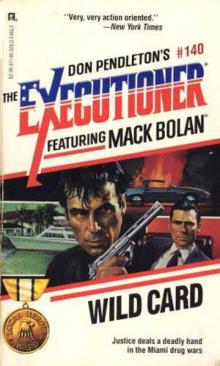 Wild Card
Wild Card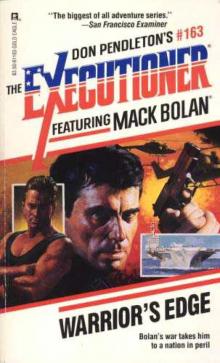 Warrior's Edge
Warrior's Edge Blood Vortex
Blood Vortex Lethal Vengeance
Lethal Vengeance Killing Kings
Killing Kings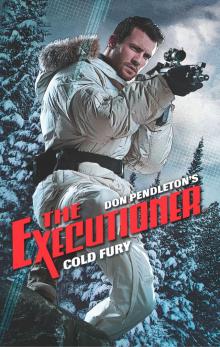 Cold Fury
Cold Fury Righteous Fear
Righteous Fear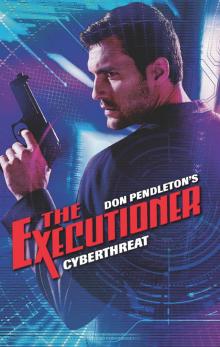 Cyberthreat
Cyberthreat Stealth Assassin
Stealth Assassin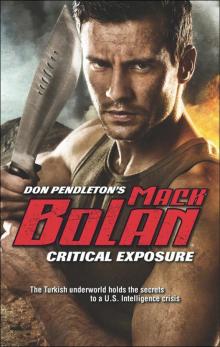 Critical Exposure
Critical Exposure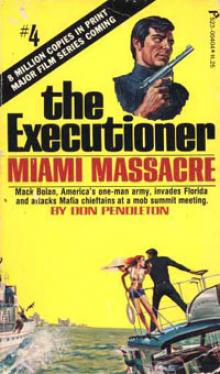 Miami Massacre te-4
Miami Massacre te-4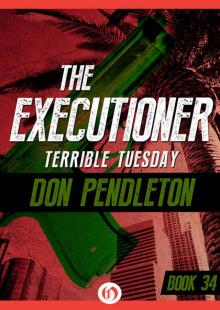 Terrible Tuesday
Terrible Tuesday Dying Art
Dying Art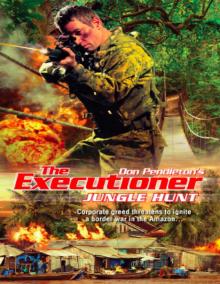 Jungle Hunt
Jungle Hunt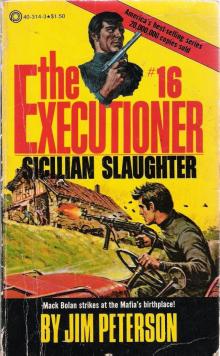 Sicilian Slaughter
Sicilian Slaughter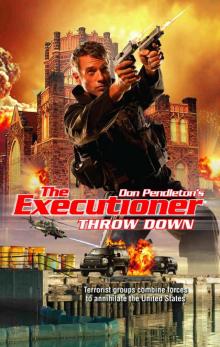 Throw Down
Throw Down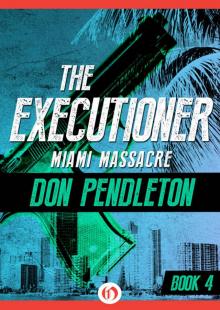 Miami Massacre
Miami Massacre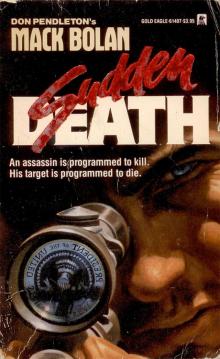 Sudden Death
Sudden Death Panic in Philly
Panic in Philly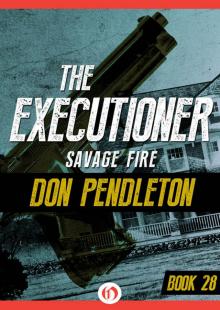 Savage Fire
Savage Fire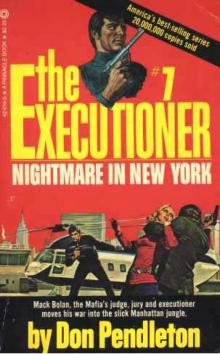 Nightmare in New York te-7
Nightmare in New York te-7 Omega Cult
Omega Cult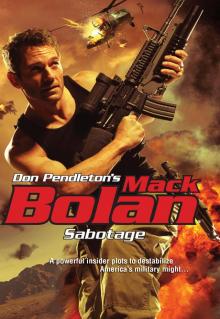 Sabotage
Sabotage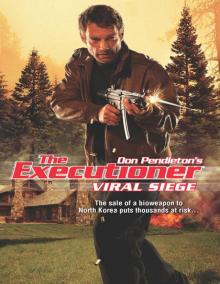 Viral Siege
Viral Siege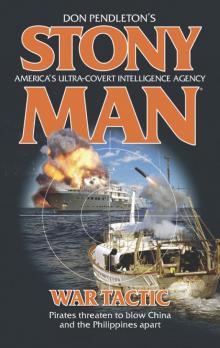 War Tactic
War Tactic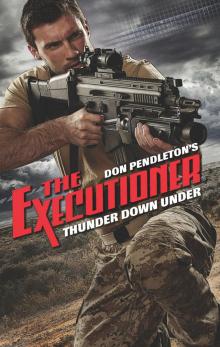 Thunder Down Under
Thunder Down Under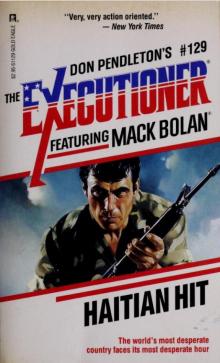 Haitian Hit
Haitian Hit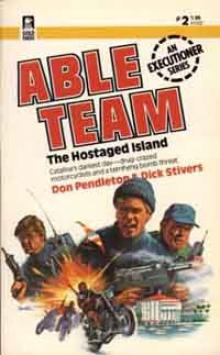 The Hostaged Island at-2
The Hostaged Island at-2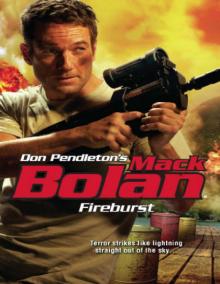 Fireburst
Fireburst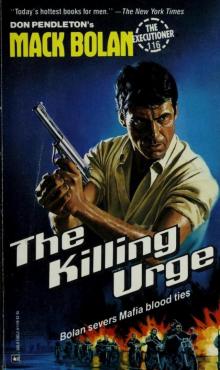 The Killing Urge
The Killing Urge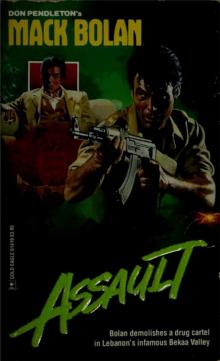 Assault
Assault Ashes To Ashes: Ashton Ford, Psychic Detective
Ashes To Ashes: Ashton Ford, Psychic Detective Flight 741
Flight 741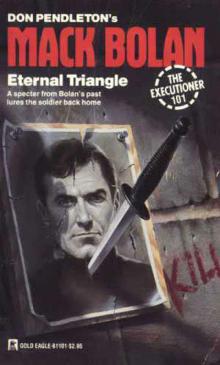 Eternal Triangle
Eternal Triangle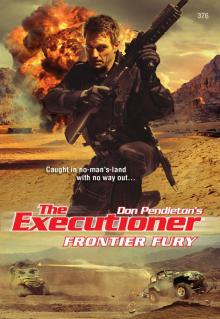 Frontier Fury
Frontier Fury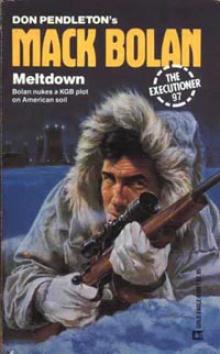 Meltdown te-97
Meltdown te-97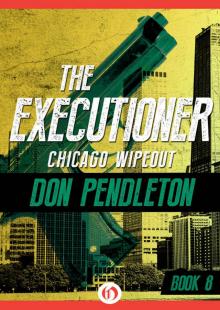 Chicago Wipeout
Chicago Wipeout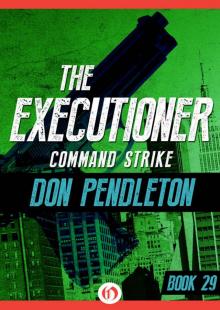 Command Strike
Command Strike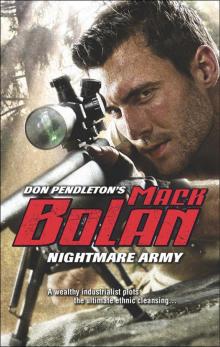 Nightmare Army
Nightmare Army Ivory Wave
Ivory Wave Combat Machines
Combat Machines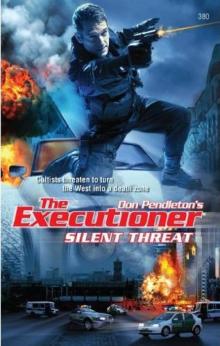 Silent Threat
Silent Threat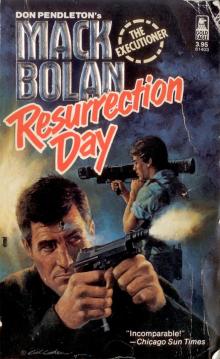 Resurrection Day
Resurrection Day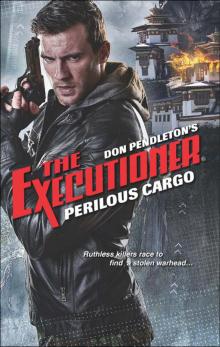 Perilous Cargo
Perilous Cargo Syrian Rescue
Syrian Rescue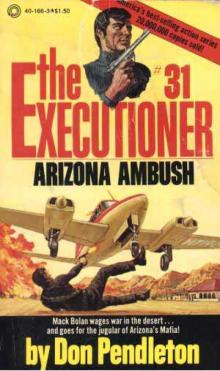 Arizona Ambush te-31
Arizona Ambush te-31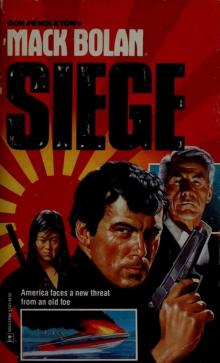 Siege
Siege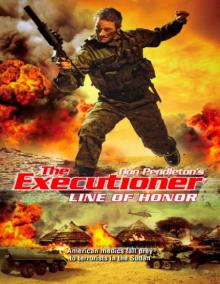 Line of Honor
Line of Honor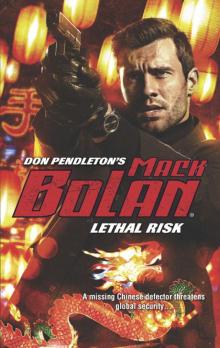 Lethal Risk
Lethal Risk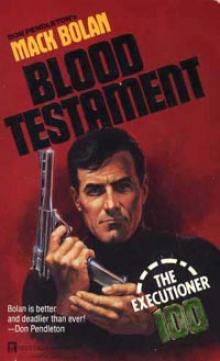 Blood Testament te-100
Blood Testament te-100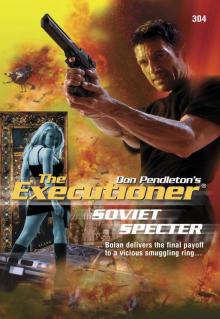 Soviet Specter
Soviet Specter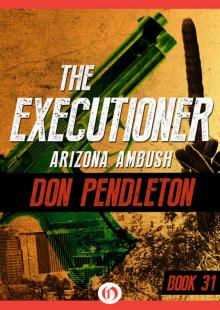 Arizona Ambush
Arizona Ambush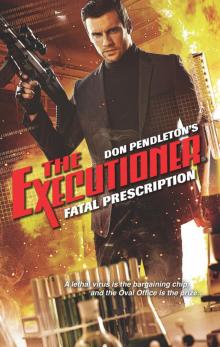 Fatal Prescription
Fatal Prescription Deep Recon
Deep Recon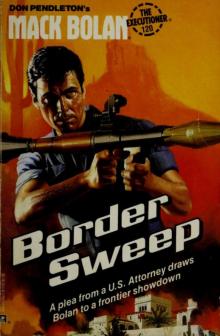 Border Sweep
Border Sweep Life to Life
Life to Life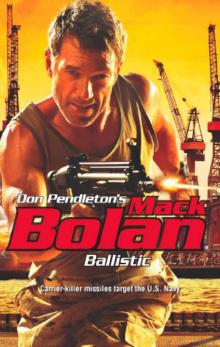 Ballistic
Ballistic Hellbinder
Hellbinder Time to Time: Ashton Ford, Psychic Detective (Ashton Ford Series Book 6)
Time to Time: Ashton Ford, Psychic Detective (Ashton Ford Series Book 6)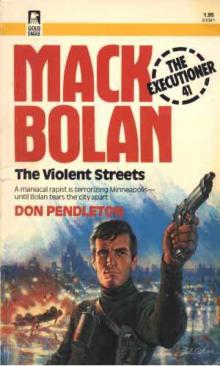 The Violent Streets te-41
The Violent Streets te-41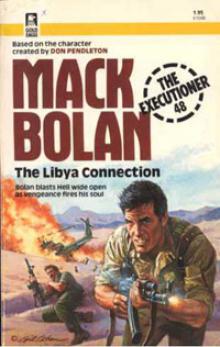 The Libya Connection te-48
The Libya Connection te-48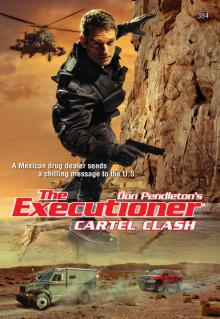 Cartel Clash
Cartel Clash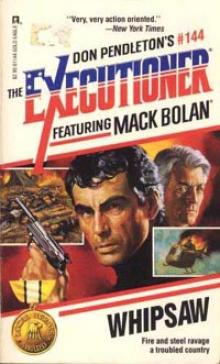 Whipsaw te-144
Whipsaw te-144 Blood Rites
Blood Rites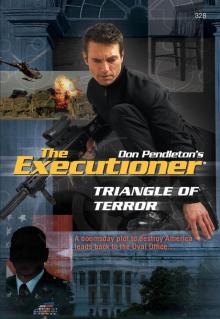 Triangle of Terror
Triangle of Terror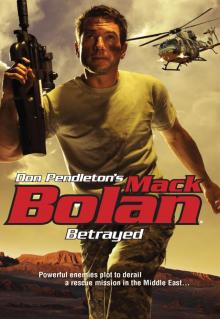 Betrayed
Betrayed San Diego Siege
San Diego Siege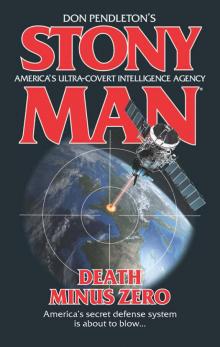 Death Minus Zero
Death Minus Zero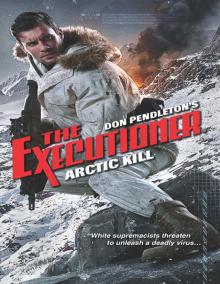 Arctic Kill
Arctic Kill Mind to Mind: Ashton Ford, Psychic Detective
Mind to Mind: Ashton Ford, Psychic Detective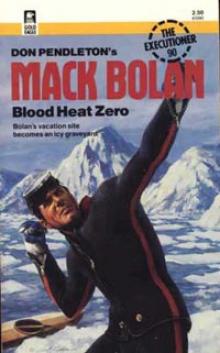 Blood Heat Zero te-90
Blood Heat Zero te-90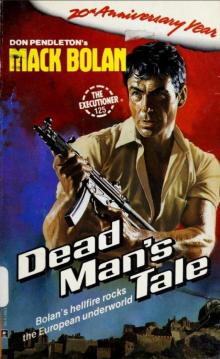 Dead Man's Tale
Dead Man's Tale Sunscream te-85
Sunscream te-85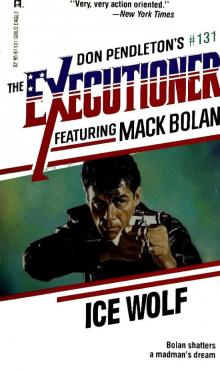 Ice Wolf
Ice Wolf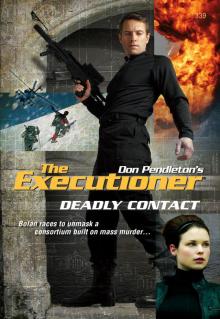 Deadly Contact
Deadly Contact The Cartel Hit
The Cartel Hit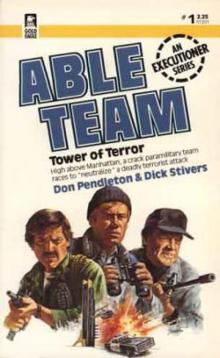 Tower of Terror at-1
Tower of Terror at-1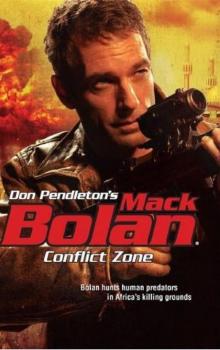 Conflict Zone
Conflict Zone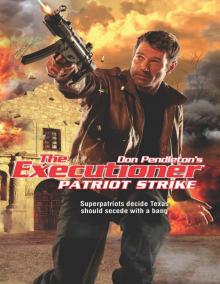 Patriot Strike
Patriot Strike Point Blank
Point Blank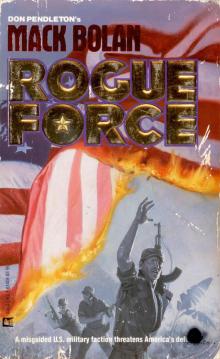 Rogue Force
Rogue Force Patriot Play
Patriot Play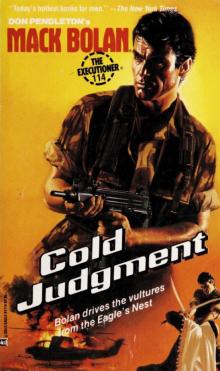 Cold Judgment
Cold Judgment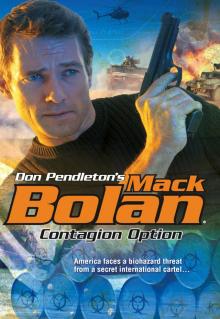 Contagion Option
Contagion Option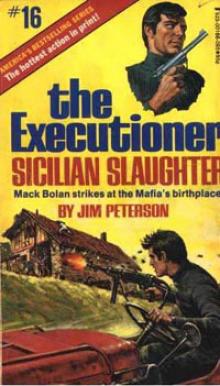 Sicilian Slaughter te-16
Sicilian Slaughter te-16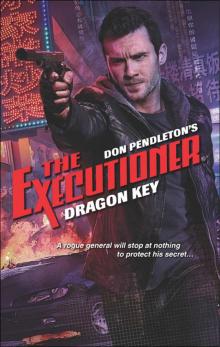 Dragon Key
Dragon Key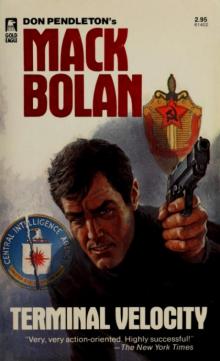 Terminal Velocity
Terminal Velocity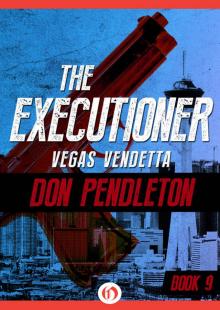 Vegas Vendetta
Vegas Vendetta Ashes To Ashes
Ashes To Ashes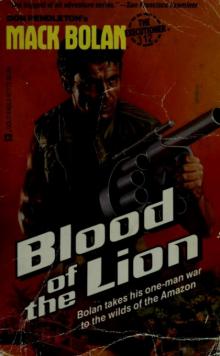 Blood of the Lion
Blood of the Lion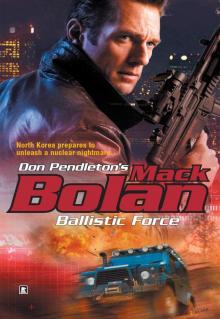 Ballistic Force
Ballistic Force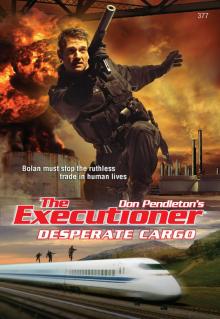 Desperate Cargo
Desperate Cargo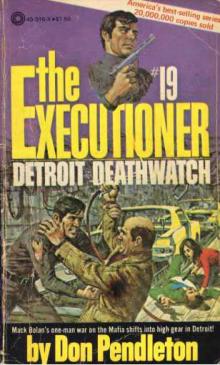 Detroit Deathwatch te-19
Detroit Deathwatch te-19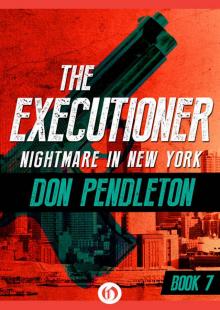 Nightmare in New York
Nightmare in New York Killpath
Killpath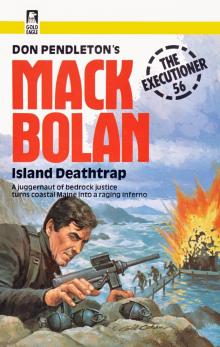 Executioner 056 - Island Deathtrap
Executioner 056 - Island Deathtrap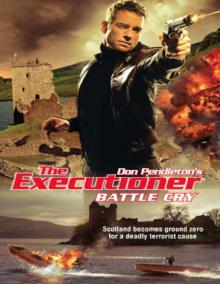 Battle Cry
Battle Cry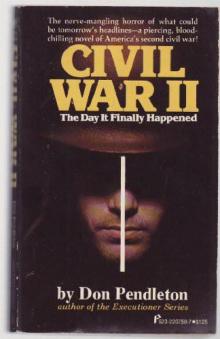 Don Pendleton - Civil War II
Don Pendleton - Civil War II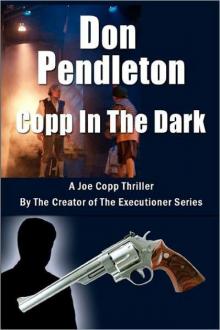 Copp In The Dark, A Joe Copp Thriller (Joe Copp Private Eye Series)
Copp In The Dark, A Joe Copp Thriller (Joe Copp Private Eye Series) China Crisis (Stony Man)
China Crisis (Stony Man)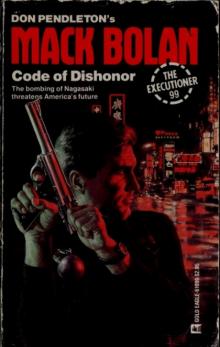 Code of Dishonor
Code of Dishonor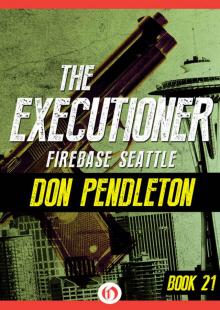 Firebase Seattle
Firebase Seattle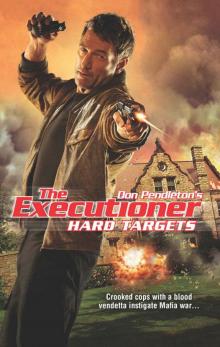 Hard Targets
Hard Targets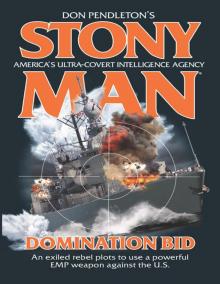 Domination Bid
Domination Bid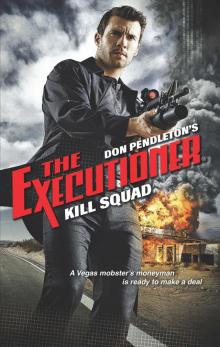 Kill Squad
Kill Squad Slayground
Slayground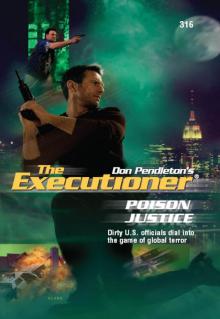 Poison Justice
Poison Justice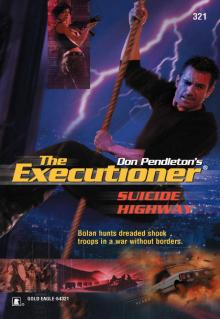 Suicide Highway
Suicide Highway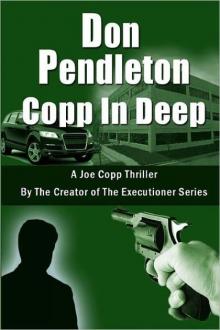 Copp In Deep, A Joe Copp Thriller (Joe Copp Private Eye Series)
Copp In Deep, A Joe Copp Thriller (Joe Copp Private Eye Series)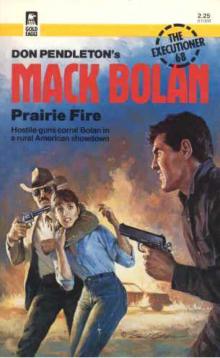 Prairie Fire
Prairie Fire Ninja Assault
Ninja Assault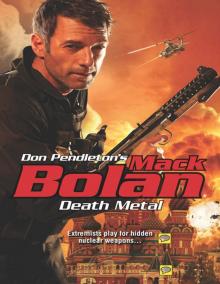 Death Metal
Death Metal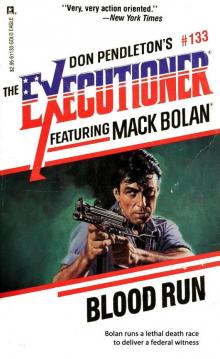 Blood Run
Blood Run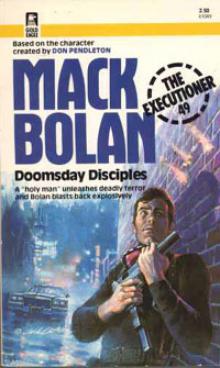 Doomsday Disciples te-49
Doomsday Disciples te-49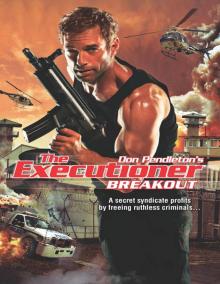 Breakout
Breakout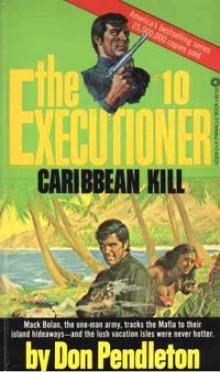 Caribbean Kill te-10
Caribbean Kill te-10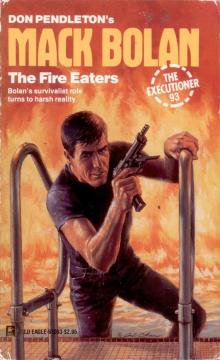 Fire Eaters
Fire Eaters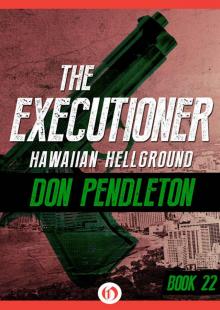 Hawaiian Hellground
Hawaiian Hellground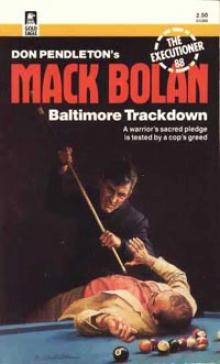 Baltimore Trackdown te-88
Baltimore Trackdown te-88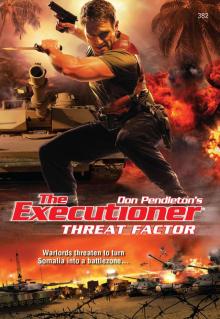 Threat Factor
Threat Factor Don Pendleton's Science Fiction Collection, 3 Books Box Set, (The Guns of Terra 10; The Godmakers; The Olympians)
Don Pendleton's Science Fiction Collection, 3 Books Box Set, (The Guns of Terra 10; The Godmakers; The Olympians)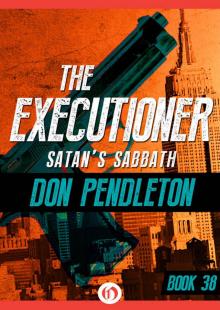 Satan’s Sabbath
Satan’s Sabbath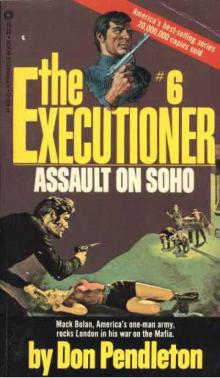 Assault on Soho te-6
Assault on Soho te-6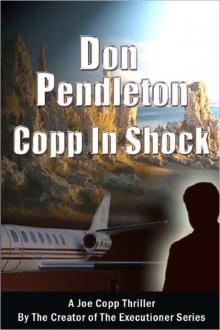 Copp In Shock, A Joe Copp Thriller (Joe Copp Private Eye Series)
Copp In Shock, A Joe Copp Thriller (Joe Copp Private Eye Series)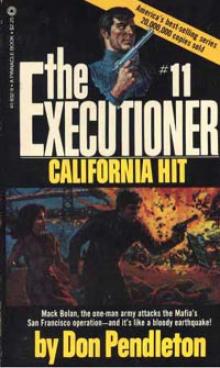 California Hit te-11
California Hit te-11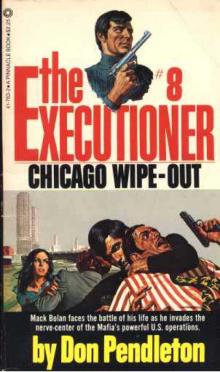 Chicago Wipe-Out te-8
Chicago Wipe-Out te-8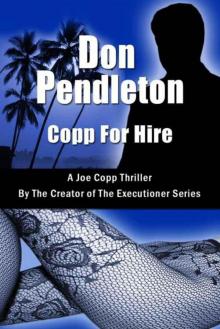 Copp For Hire, A Joe Copp Thriller (Joe Copp Private Eye Series)
Copp For Hire, A Joe Copp Thriller (Joe Copp Private Eye Series)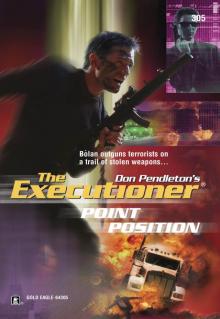 Point Position
Point Position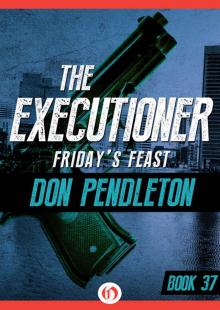 Friday’s Feast
Friday’s Feast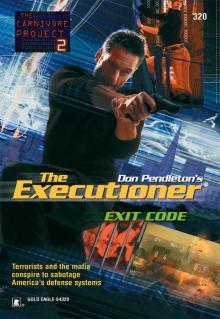 Exit Code
Exit Code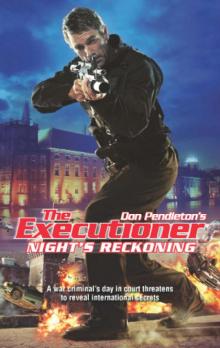 Night's Reckoning
Night's Reckoning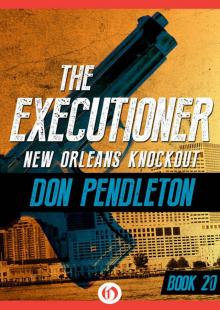 New Orleans Knockout
New Orleans Knockout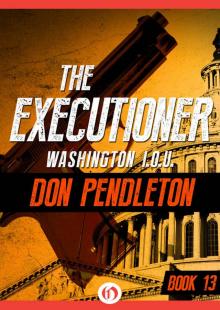 Washington I.O.U.
Washington I.O.U.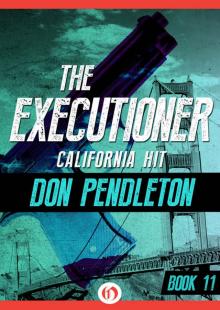 California Hit
California Hit Blood Vendetta
Blood Vendetta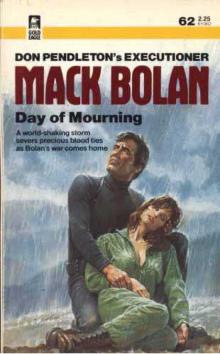 Day of Mourning te-62
Day of Mourning te-62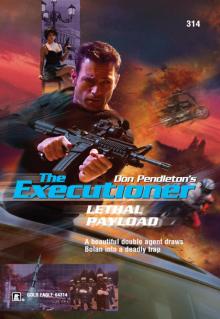 Lethal Payload
Lethal Payload Boston Blitz
Boston Blitz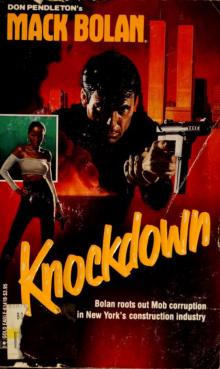 Knockdown
Knockdown Blood Sport te-46
Blood Sport te-46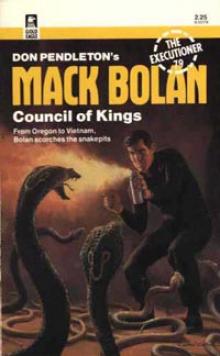 Council of Kings te-79
Council of Kings te-79 Terrorist Dispatch (Executioner)
Terrorist Dispatch (Executioner)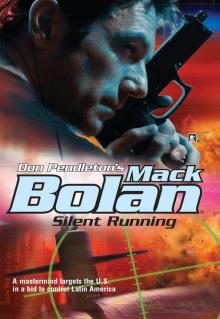 Silent Running
Silent Running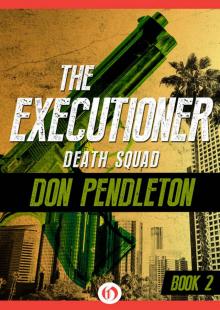 Death Squad
Death Squad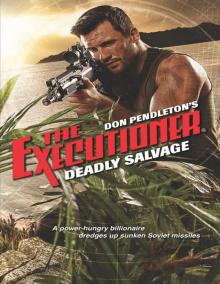 Deadly Salvage
Deadly Salvage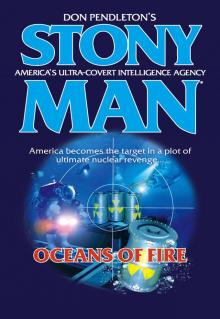 Oceans of Fire
Oceans of Fire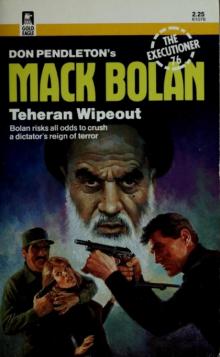 Teheran Wipeout
Teheran Wipeout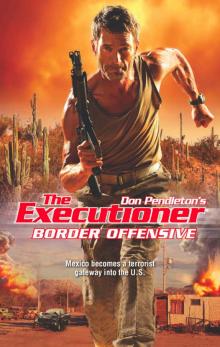 Border Offensive
Border Offensive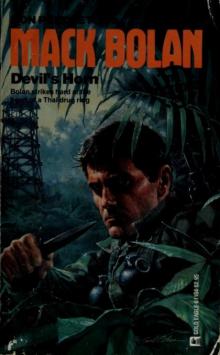 Devil's Horn
Devil's Horn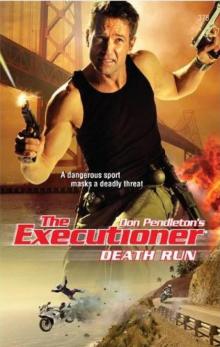 Death Run
Death Run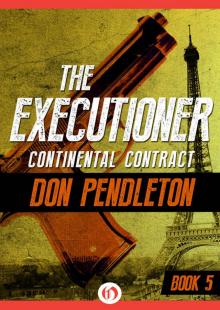 Continental Contract
Continental Contract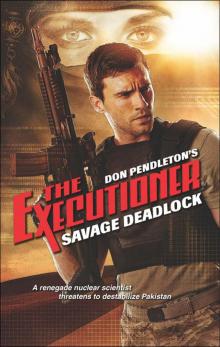 Savage Deadlock
Savage Deadlock Eye to Eye: Ashton Ford, Psychic Detective
Eye to Eye: Ashton Ford, Psychic Detective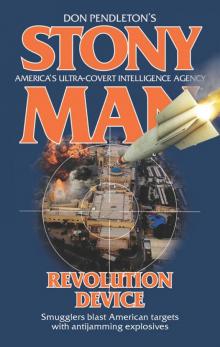 Revolution Device
Revolution Device Heart to Heart: Ashton Ford, Psychic Detective
Heart to Heart: Ashton Ford, Psychic Detective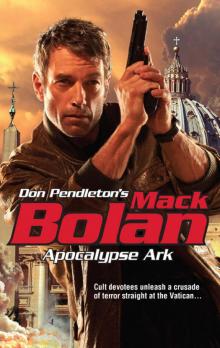 Apocalypse Ark
Apocalypse Ark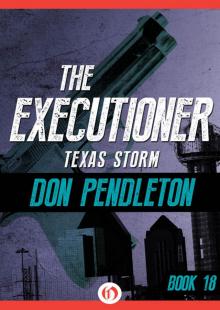 Texas Storm
Texas Storm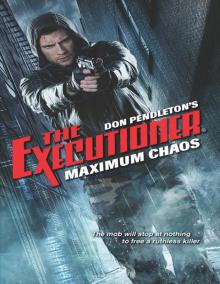 Maximum Chaos
Maximum Chaos Sensor Sweep
Sensor Sweep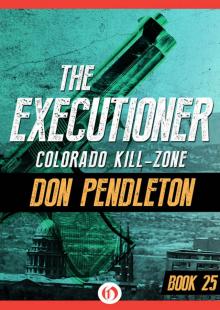 Colorado Kill-Zone
Colorado Kill-Zone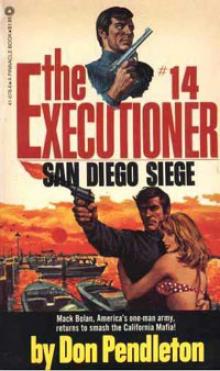 San Diego Siege te-14
San Diego Siege te-14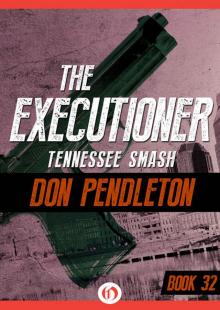 Tennessee Smash
Tennessee Smash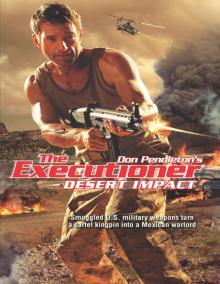 Desert Impact
Desert Impact Fire in the Sky
Fire in the Sky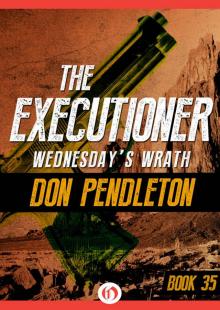 Wednesday’s Wrath
Wednesday’s Wrath Super Bolan - 001 - Stony Man Doctrine
Super Bolan - 001 - Stony Man Doctrine Chain Reaction
Chain Reaction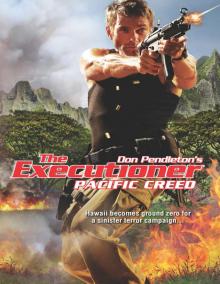 Pacific Creed
Pacific Creed Death List
Death List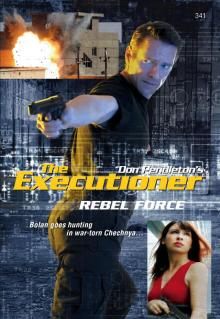 Rebel Force
Rebel Force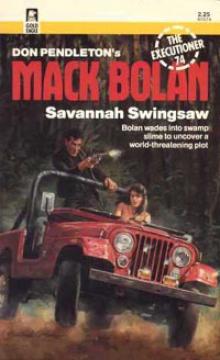 Savannah Swingsaw te-74
Savannah Swingsaw te-74 Heart to Heart
Heart to Heart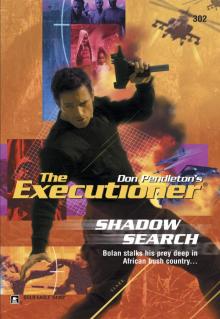 Shadow Search
Shadow Search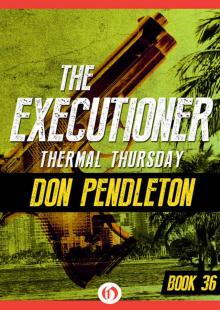 Thermal Thursday
Thermal Thursday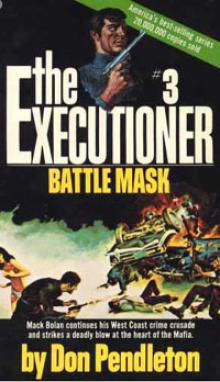 Battle Mask te-3
Battle Mask te-3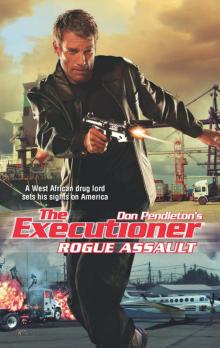 Rogue Assault
Rogue Assault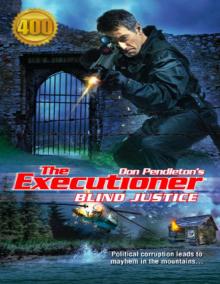 Blind Justice
Blind Justice Cold Fusion
Cold Fusion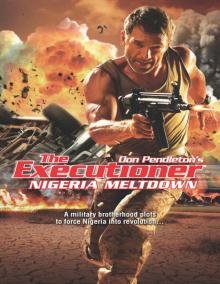 Nigeria Meltdown
Nigeria Meltdown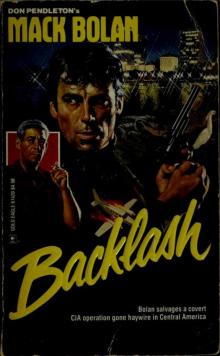 Backlash
Backlash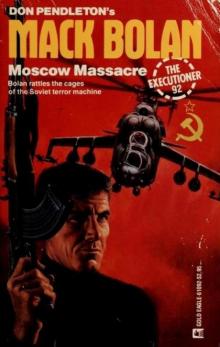 Moscow Massacre
Moscow Massacre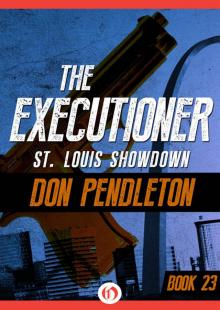 St. Louis Showdown
St. Louis Showdown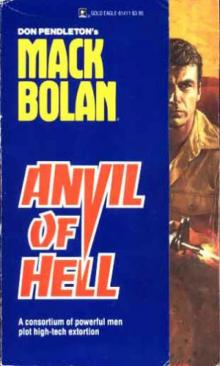 Anvil of Hell
Anvil of Hell Life to Life: Ashton Ford, Psychic Detective
Life to Life: Ashton Ford, Psychic Detective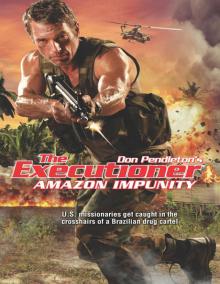 Amazon Impunity
Amazon Impunity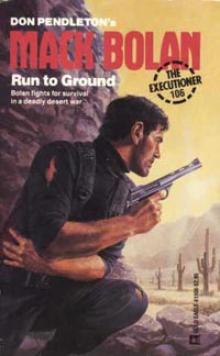 Run to Ground te-106
Run to Ground te-106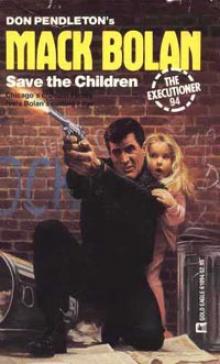 Save the Children te-94
Save the Children te-94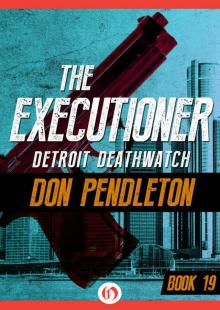 Detroit Deathwatch
Detroit Deathwatch Shadow Hunt
Shadow Hunt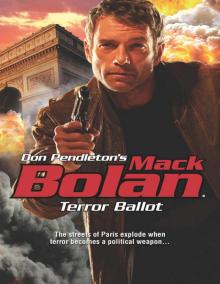 Terror Ballot
Terror Ballot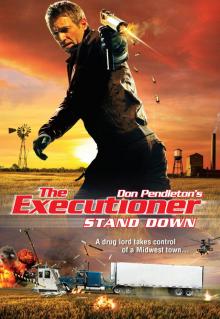 Stand Down
Stand Down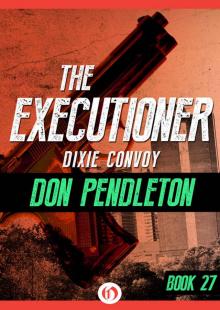 Dixie Convoy
Dixie Convoy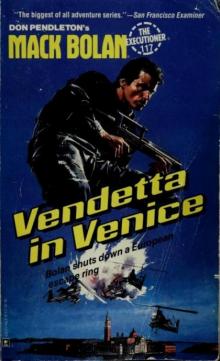 Vendetta in Venice
Vendetta in Venice War Against the Mafia
War Against the Mafia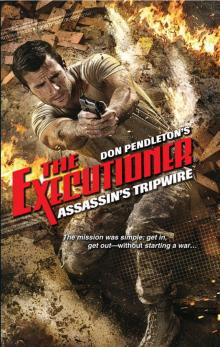 Assassin's Tripwire
Assassin's Tripwire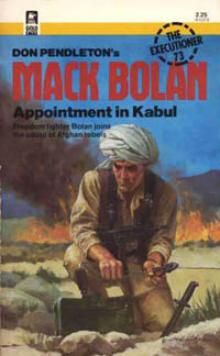 Appointment in Kabul te-73
Appointment in Kabul te-73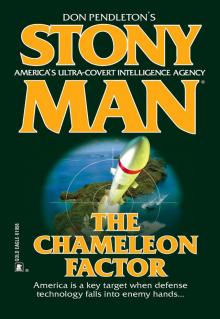 The Chameleon Factor
The Chameleon Factor Pirate Offensive
Pirate Offensive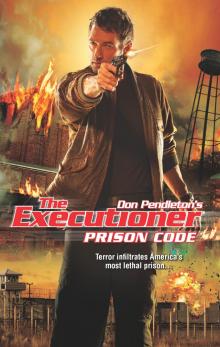 Prison Code
Prison Code Firebase Seattle te-21
Firebase Seattle te-21 Ground Zero
Ground Zero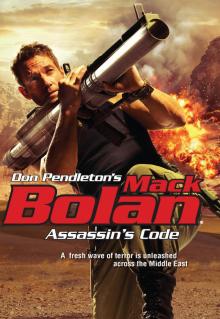 Assassin's Code
Assassin's Code Perilous Skies (Stony Man)
Perilous Skies (Stony Man) Toxic Terrain
Toxic Terrain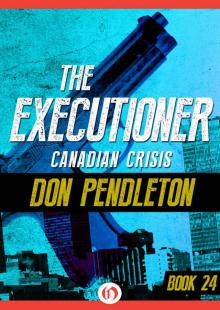 Canadian Crisis
Canadian Crisis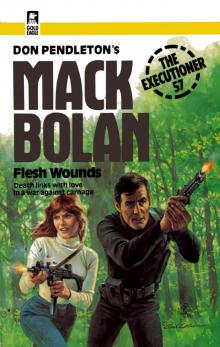 Executioner 057 - Flesh Wounds
Executioner 057 - Flesh Wounds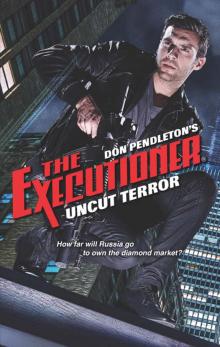 Uncut Terror
Uncut Terror War Everlasting (Superbolan)
War Everlasting (Superbolan)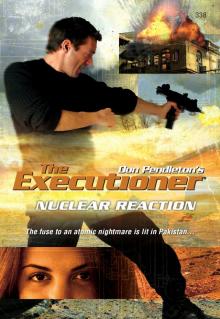 Nuclear Reaction
Nuclear Reaction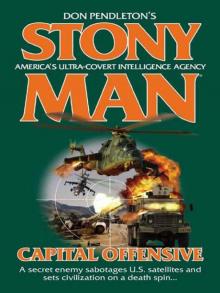 Capital Offensive (Stony Man)
Capital Offensive (Stony Man) Beirut Payback te-67
Beirut Payback te-67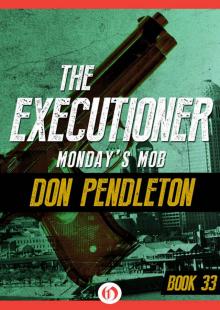 Monday’s Mob
Monday’s Mob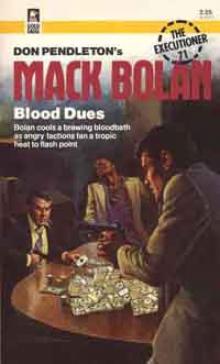 Blood Dues te-71
Blood Dues te-71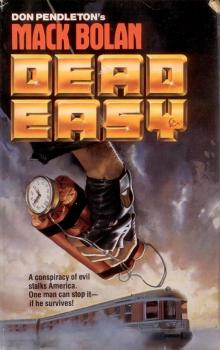 Dead Easy
Dead Easy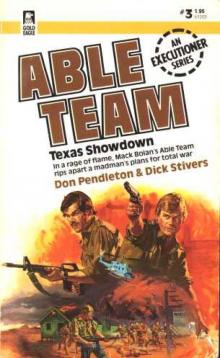 Texas Showdown at-3
Texas Showdown at-3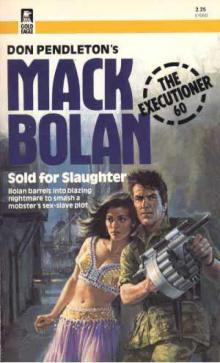 Sold for Slaughter
Sold for Slaughter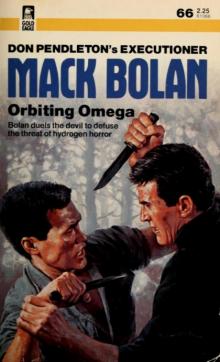 Orbiting Omega
Orbiting Omega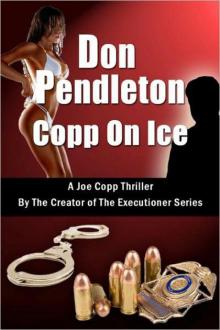 Copp On Ice, A Joe Copp Thriller (Joe Copp Private Eye Series)
Copp On Ice, A Joe Copp Thriller (Joe Copp Private Eye Series) Rebel Blast
Rebel Blast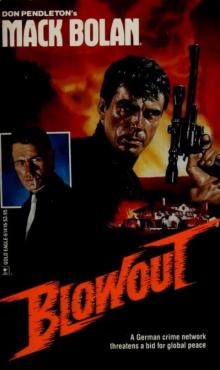 Blowout
Blowout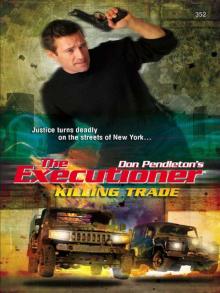 Killing Trade
Killing Trade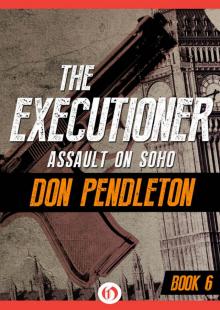 Assault on Soho
Assault on Soho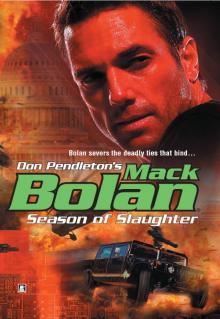 Season of Slaughter
Season of Slaughter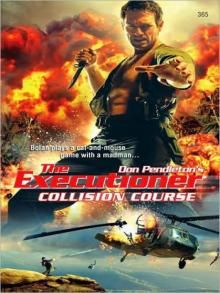 Collision Course
Collision Course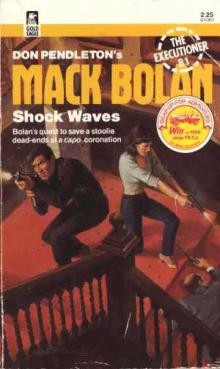 Shock Waves
Shock Waves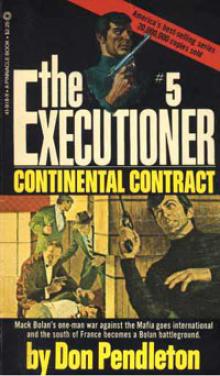 Continental Contract te-5
Continental Contract te-5 Dead Reckoning
Dead Reckoning Enemies Within
Enemies Within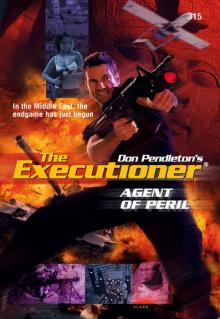 Agent of Peril
Agent of Peril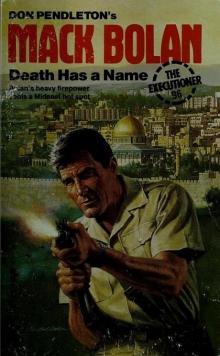 Death Has a Name
Death Has a Name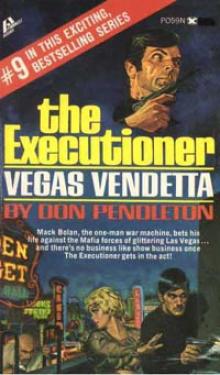 Vegas Vendetta te-9
Vegas Vendetta te-9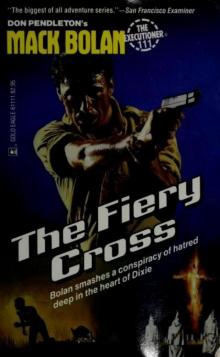 The Fiery Cross
The Fiery Cross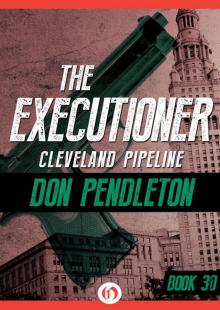 Cleveland Pipeline
Cleveland Pipeline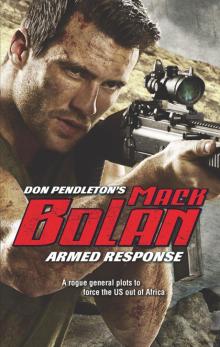 Armed Response
Armed Response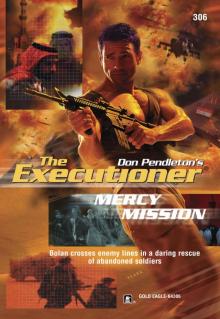 Mercy Mission
Mercy Mission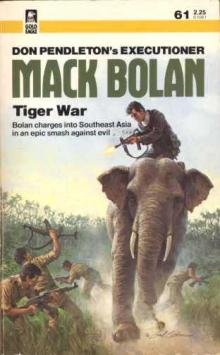 Tiger War te-61
Tiger War te-61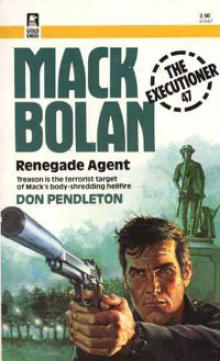 Renegade Agent te-47
Renegade Agent te-47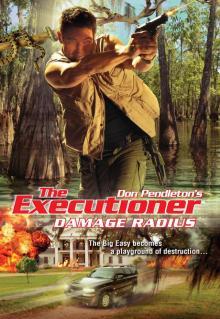 Damage Radius
Damage Radius Eye to Eye
Eye to Eye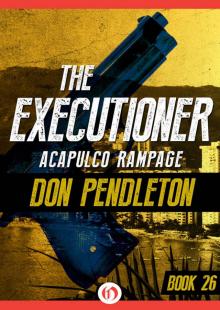 Acapulco Rampage
Acapulco Rampage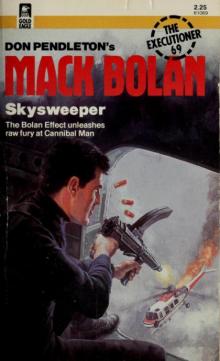 Skysweeper
Skysweeper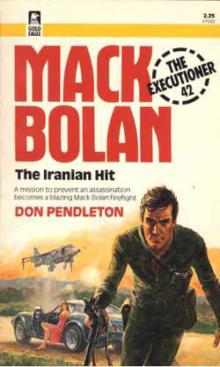 The Iranian Hit te-42
The Iranian Hit te-42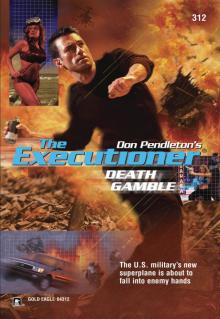 Death Gamble
Death Gamble Rebel Trade
Rebel Trade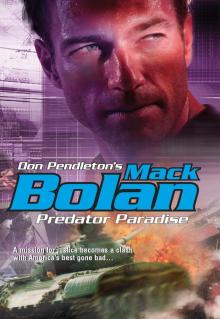 Predator Paradise
Predator Paradise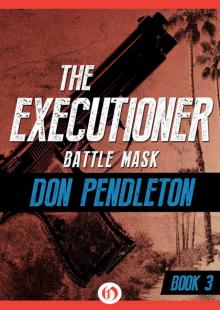 Battle Mask
Battle Mask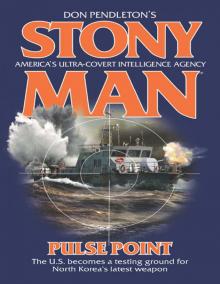 Pulse Point
Pulse Point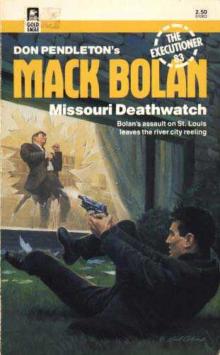 Missouri Deathwatch
Missouri Deathwatch Blood Tide
Blood Tide Missile Intercept
Missile Intercept Jersey Guns
Jersey Guns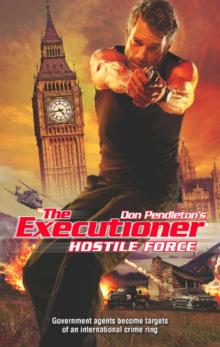 Hostile Force
Hostile Force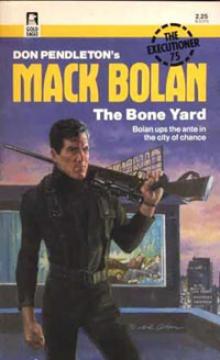 The Bone Yard te-75
The Bone Yard te-75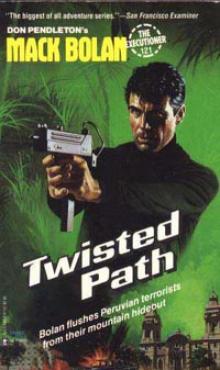 Twisted Path te-121
Twisted Path te-121 Mind to Mind
Mind to Mind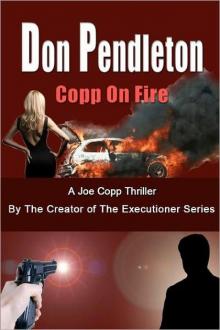 Copp On Fire, A Joe Copp Thriller (Joe Copp, Private Eye Series)
Copp On Fire, A Joe Copp Thriller (Joe Copp, Private Eye Series)